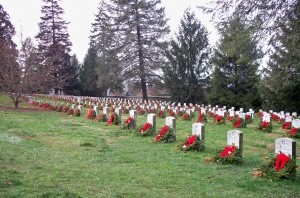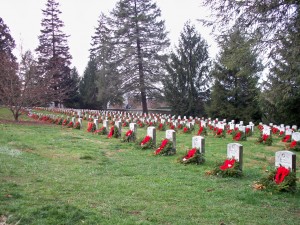Month: July 2014

Where Are The Gettysburg Battlefield Soldiers Buried?
July 16, 2014Are you curious, as many of our guests have been here at Gettysburg Battlefield Bus Tours, where the soldiers who fought in the Battle of Gettysburg are buried? Fortunately you won’t have to search any further, as today’s blog will tell you exactly where you can find both the Union and Confederate soldiers burial sites, and then all you’ll have to do is book a visit here to Gettysburg to see them!
Union Soldiers –

Most of the Union dead are buried in the Soldiers’ National Cemetery, which is located between Baltimore Street and Taneytown Road here in Gettysburg. It is right beside the local town cemetery and features the Soldiers National Monument in the center of it all. The Veteran’s Administration actually offers a database of burials that you can search by gravesite location, as well as name, date of birth, and date of death.
Confederate Soldiers –
The southern soldiers were actually removed from the battlefield roughly nine years after the battle and taken to southern cemeteries with specific locales set aside for the Gettysburg campaign casualties.
If you have a specific question you’d like answered, be sure to let us know in the comments, or leave us a message on our social media channels that you can find at the bottom of this page. We’re more than happy to help, and look forward to your visit!
Union Brig. General Alexander Schimmelfennig
July 15, 2014
History is to be found everywhere in the town of Gettysburg. In addition to the monuments, plaques & cannons, useful tools called “Wayside Markers” are also available for the serious or casual student of the battle. A great deal of valuable insight may be obtained by paying careful attention to these markers as you visit the area.
On such marker can be found at the former home of Henry & Catherine Garlach – the address being 319 Baltimore Street.
This marker relates the story of Union Brig. General Alexander Schimmelfennig who, on July 1, 1863, found himself wounded & riding through the town desperately trying to avoid capture (or worse) by the advancing Confederates.
With his horse shot from underneath him, General Schimmelfennig realized that he would not make it back to the Union lines. He quickly sought shelter under a drainage ditch cover behind the Garlach home.
Under cover of darkness the General moved out from the cover & squeezed himself between a wood pile & a hog swill barrel. Mrs. Garlach discovered him while feeding the hogs & managed to discreetly supply him with food & water during his concealment.
General Schimmelfennig was not able to return to his men until the last of the Confederate sharpshooters left the town on July 4th.
The George Spangler Farm Civil War Hospital Site
July 9, 2014Friday, June 06, 2014 to Sunday, August 10, 2014
Time: 10:00am-2:00pm
Educational Event
The George Spangler Farm Civil War Hospital Site is one of the most intact Civil War field hospitals used during the battle of Gettysburg. During and after the battle, the Spangler family’s homestead was occupied by the Union army’s Eleventh Corps who used the buildings and fields as a hospital for some 1,900 wounded Union and Confederate soldiers.
Free admission and shuttle tickets are available at the Ticketing Counter inside Gettysburg National Military Park Museum & Visitor Center. The site is accessible by shuttle only. Tickets may only be obtained the day of your visit to the Spangler Farm.
Program Schedule
An Army Field Hospital: The George Spangler Farm
11am-Noon
Join a National Park Service Ranger at the George Spangler Farm and discover the field hospital where over 1,900 soldiers wounded in the battle of Gettysburg were cared for.
Arts and Trades of the Past
10:15-10:45am
12:15-12:45pm
Join living historians demonstrating trades of the period and get a glimpse at civilian life at the farm.
History Comes to Life: War Reaches the Homefront
1-1:30pm
View a dramatic ensemble cast of soldiers and civilians who witnessed the battle of Gettysburg and the George Spangler Farm’s transformation from home to hospital.
Interactive History Encampments
10am-2pm
Mingle with living historians in authentic camps portraying the civilian experience, civilian aide societies, Civil War field medicine and Union artillery.